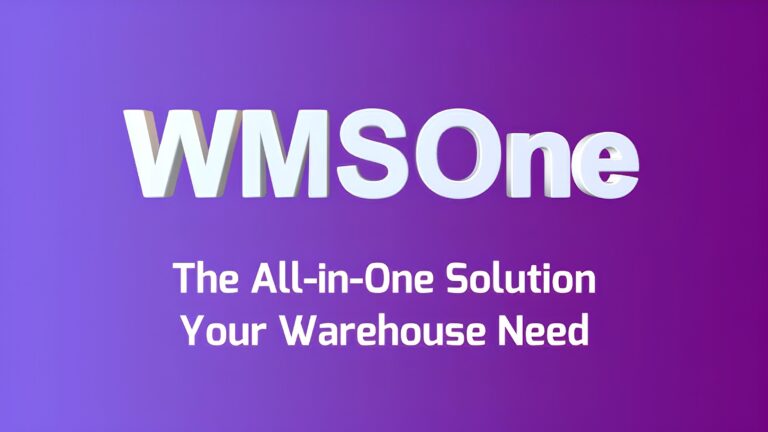The Story of a WMS Increase Customer Satisfaction
- How Last-Mile Delivery Was Affected During Covid-19 - March 30, 2024
- WMSOne Invoicing SaaS vs Traditional Invoicing Methods: - March 29, 2024
- Integrating Invoicing Systems with WMS - March 27, 2024
Introduction
This case study examines how the implementation of a Warehouse Management System (WMS) significantly boosted customer satisfaction at a logistics company. The organization faced challenges with inventory inaccuracies, delayed shipments, and overall operational inefficiencies, leading to dissatisfied customers. By adopting a WMS, the company aimed to enhance its service quality, improve order accuracy, and speed up delivery times, thereby increasing customer satisfaction.
Background
The logistics company manages inventory and shipping for various clients, processing thousands of orders daily. Previously, the company relied on manual processes for inventory management and order fulfillment. This approach resulted in frequent errors, such as incorrect shipments, inventory discrepancies, and delayed deliveries. These issues negatively impacted customer satisfaction, leading to complaints and lost business opportunities.
Objectives
- Improve Inventory Accuracy: Ensure precise inventory tracking to reduce stock discrepancies.
- Enhance Order Fulfillment: Streamline order processing to speed up delivery times.
- Boost Customer Communication: Improve transparency and communication with customers regarding order status.
- Increase Operational Efficiency: Optimize warehouse operations to reduce costs and improve productivity.
- Elevate Customer Satisfaction: Ultimately, increase overall customer satisfaction and retention.
Challenges
- Inventory Inaccuracies: Manual tracking led to frequent discrepancies between actual stock and recorded inventory.
- Delayed Shipments: Inefficient order processing and fulfillment caused significant delays in shipments.
- Poor Communication: Lack of real-time updates and transparency in the order status frustrated customers.
- Operational Inefficiencies: Manual processes were labor-intensive and prone to human error, reducing overall productivity.
- Customer Dissatisfaction: Errors and delays resulted in numerous customer complaints and decreased satisfaction.
Implementation Process
- Requirement Analysis
- Conducted a comprehensive analysis of existing processes.
- Identified key pain points and specific requirements for the new system.
- Selection of WMS
- Evaluated several WMS options based on functionality, scalability, and integration capabilities.
- Choose a cloud-based WMS with real-time tracking and automation features.
- System Configuration
- Customized the WMS to align with the company’s specific operational needs.
- Configured the system for real-time inventory tracking, automated order processing, and seamless integration with existing ERP systems.
- Data Migration
- Cleaned and standardized existing inventory data.
- Migrated historical data to the new WMS to ensure continuity and accuracy.
- User Training
- Conducted comprehensive training sessions for staff to ensure smooth transition and effective use of the new system.
- Developed detailed user manuals and provided ongoing support.
- Testing and Pilot Run
- Performed extensive testing to ensure system reliability and data accuracy.
- Conducted a pilot run to identify and resolve any potential issues before full-scale implementation.
- Go-Live
- Rolled out the new WMS in phases to minimize disruptions.
- Monitored performance closely and addressed any post-implementation issues promptly.
Results
- Improved Inventory Accuracy
- Achieved near-perfect inventory accuracy with real-time tracking and automated updates.
- Reduced stock discrepancies by 95%, ensuring accurate stock levels and preventing stockouts or overstock situations.
- Enhanced Order Fulfillment
- Streamlined order processing with automated workflows, reducing order fulfillment time by 60%.
- Increased the speed and accuracy of picking, packing, and shipping processes.
- Boosted Customer Communication
- Implemented automated notifications and real-time updates, providing customers with accurate and timely information about their orders.
- Improved transparency and customer trust by offering detailed tracking information and proactive communication.
- Increased Operational Efficiency
- Optimized warehouse layout and operations, reducing labor costs and increasing productivity.
- Enabled staff to focus on high-value tasks by automating repetitive and time-consuming processes.
- Elevated Customer Satisfaction
- Significant reduction in order errors and delays led to a 30% increase in customer satisfaction scores.
- Positive feedback from customers regarding the improved accuracy and timeliness of deliveries.
- Enhanced customer loyalty and retention rates, with a noticeable increase in repeat business.
Lessons Learned
- Thorough Planning is Crucial
- Detailed planning and requirement analysis are essential for successful WMS implementation.
- Understanding specific operational needs and customizing the system accordingly can maximize benefits.
- Stakeholder Involvement Ensures Success
- Involving all stakeholders, including warehouse staff, IT, and customer service teams, ensures alignment and buy-in.
- Continuous communication and feedback from stakeholders help address concerns and improve system adoption.
- Effective Training Enhances User Adoption
- Comprehensive training and ongoing support are critical for successful system utilization.
- Providing detailed user manuals and accessible support channels can facilitate a smooth transition.
- Incremental Rollout Minimizes Disruption
- Phased implementation reduces operational disruptions and allows for fine-tuning.
- Monitoring performance closely during the rollout helps identify and resolve issues promptly.
- Continuous Monitoring and Improvement are Essential
- Ongoing monitoring and feedback mechanisms help maintain system performance and address issues promptly.
- Regular reviews and updates to the system can ensure it continues to meet evolving operational needs.
Conclusion
The implementation of the WMS significantly improved operational efficiency, accuracy, and customer satisfaction at the logistics company. By addressing key challenges such as inventory inaccuracies, delayed shipments, and poor communication, the company was able to enhance its service quality and boost customer satisfaction.
This case study highlights the importance of thorough planning, stakeholder involvement, effective training, and continuous monitoring in achieving successful WMS implementation. The solutions and strategies employed can serve as a valuable reference for other organizations seeking to enhance customer satisfaction through WMS implementation. Through careful planning, phased implementation, and continuous support, the company transformed its operations, leading to increased customer satisfaction and retention.







